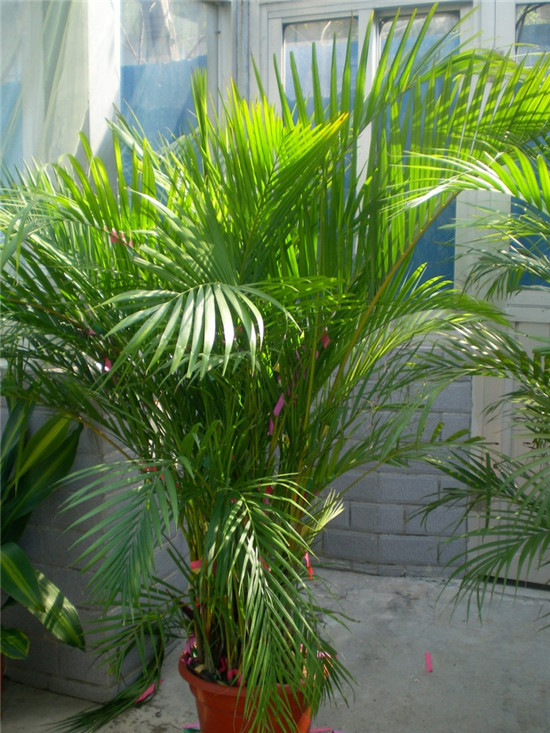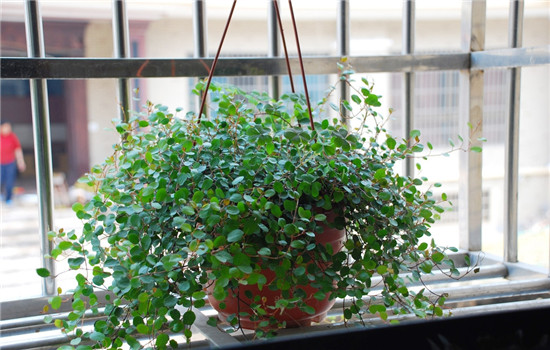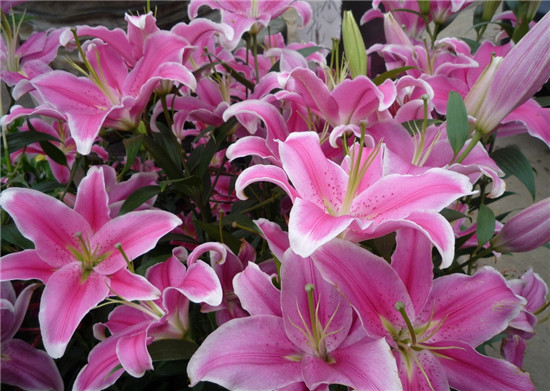Introduction to the most common indoor plants
How to keep the air fresh in the room is a problem that we must consider in our daily life. In addition to the air purifier, more people will choose to put indoor plants that purify the air. Which plants are better and what we should pay attention to? let's take a look!

Ranking of indoor plants that purify the air
1. Sunflower (Palm) the number one plant listed by NASA to purify the air is the sunflower, which is known as "the most effective air humidifier". Betel nuts keep your room or office moist during dry periods, continuously removing harmful chemicals from the air. In winter, it can even replace the humidifier.
two。 Palm bamboo (Palmaceae) palm bamboo and sunflower are rated by NASA as the most air-purifying plants. Brown bamboo is an omnipotent plant that can survive in dry and humid climates at temperatures ranging from 20 to 100 degrees Fahrenheit and resistant to most plant insects. Brown bamboo pictures to enjoy more pictures of plants that can purify the air, please search on this site.
3. Hawaiian coconuts (palms), which score slightly lower than the first two plants, are also one of the good "purifying plants" that thrive in a small amount of sunlight and moist but non-humid conditions. If these conditions are guaranteed, Hawaiian coconuts can help keep your indoor air fresh.
4. Hevea brasiliensis (Moraceae) the fourth largest air purification plant rated by NASA is the rubber tree. Rubber trees are good at removing indoor chemical toxins, especially formaldehyde. Unlike other plants, it does not need a lot of sunlight, but its purification effect is stronger than all other banyans. However, it is important to note that the leaves of the rubber tree are poisonous, so be careful if your pet moves around the rubber tree.
5. Dragon Blood Tree ranked fifth with a score of 7.8. As long as you buy the dragon blood tree back, it can make the air in your room or office fresh and pleasant.
Recommendation of other air purification plants

1. Hanging orchid: the ability to absorb harmful chemicals in the air exceeds the air screening procedure. 1 pot of orchid, within 24 hours, can absorb indoor carbon monoxide, nitrogen peroxide and other volatile harmful gases.
2. Cactus: it is characterized by closing stomata during the day to prevent water evaporation. Open the stomata at night to absorb carbon dioxide and release oxygen. If you put two or three pots of cactus indoors, you can increase the negative ions in the air, which is greatly conducive to sleep and health.
3, tiger tail orchid: natural scavenger, one pot of tiger tail orchid can absorb more than 80% of harmful gases in the room of about 10 square meters, two pots of tiger tail orchid can basically completely purify the air in the general room; tiger tail orchid can also release a lot of oxygen during the day.
4. Aloe vera: the flower proverb says, "hanging orchid aloe vera is a strong hand, formaldehyde is scared to avoid." Evergreen aloe can absorb peculiar smell for a long time. In addition, aloe has a cosmetic effect.
Rose: it can absorb hydrogen sulfide, hydrogen fluoride, benzene, ethylphenol, ether and other gases; it also has considerable resistance to sulfur dioxide and nitrogen dioxide.
Ivy: a pot of ivy can destroy 90% of the benzene in a room of 8 to 10 square meters, deal with bacteria and other harmful substances brought back from outdoors, and even absorb dust that is difficult to absorb by vacuum cleaners.

Plants that cannot be placed indoors
Rose: the rich original fragrance emitted by rose flowers will make people with allergies feel chest tightness and discomfort and are out of breath.
Orchids: if the aroma is smelled for too long, it will cause excessive excitement and cause insomnia.
Oleander: it emits poisonous gases, which can make people depressed and wheezing, and easily cause tracheitis and pneumonia. Smelling it often can lead to a decline in intelligence.
Bauhinia: if people are exposed to pollen for a long time, it will induce asthma.
Nocturnal incense: it can emit particles that strongly stimulate the sense of smell at night. Patients with high blood pressure and heart disease should not hear it for a long time, otherwise it will aggravate the condition.
Lily: smell its fragrance for a long time, which will excite people's central nervous system and cause insomnia.

Hydrangea: if people come into contact with the particles emitted by it for a long time, they will have skin allergies or itching.
Pine and cypress: the smell of pine and cypress flowers and trees has an irritating effect on the intestines and stomach of the human body. hearing it for a long time will not only affect people's appetite, but also make pregnant women upset and nauseous. Source: blue sea and silver sand synthesis.
The above is all the contents of the most common introduction of indoor plants that I have summarized for you. I hope this article can help you. Please continue to follow us.
There will be skin allergies or itching.
Pine and cypress: the smell of pine and cypress flowers and trees has an irritating effect on the intestines and stomach of the human body. hearing it for a long time will not only affect people's appetite, but also make pregnant women upset and nauseous. Source: blue sea and silver sand synthesis.
The above is all the contents of the most common introduction of indoor plants that I have summarized for you. I hope this article can help you. Please continue to follow us.
Related
- Wuhan Hospital Iron Tree Blooming Result Was Instantly Frightened by the Gardener Master
- Which variety of camellia is the most fragrant and best? Which one do you like best?
- What is the small blue coat, the breeding methods and matters needing attention of the succulent plant
- Dormancy time and maintenance management of succulent plants during dormancy
- Minas succulent how to raise, Minas succulent plant pictures
- What are the varieties of winter succulent plants
- How to raise succulent plants in twelve rolls? let's take a look at some experience of breeding twelve rolls.
- Attention should be paid to water control for succulent plants during dormant period (winter and summer)
- Watering experience of twelve rolls of succulent plants
- Techniques for fertilizing succulent plants. An article will let you know how to fertilize succulent plants.



